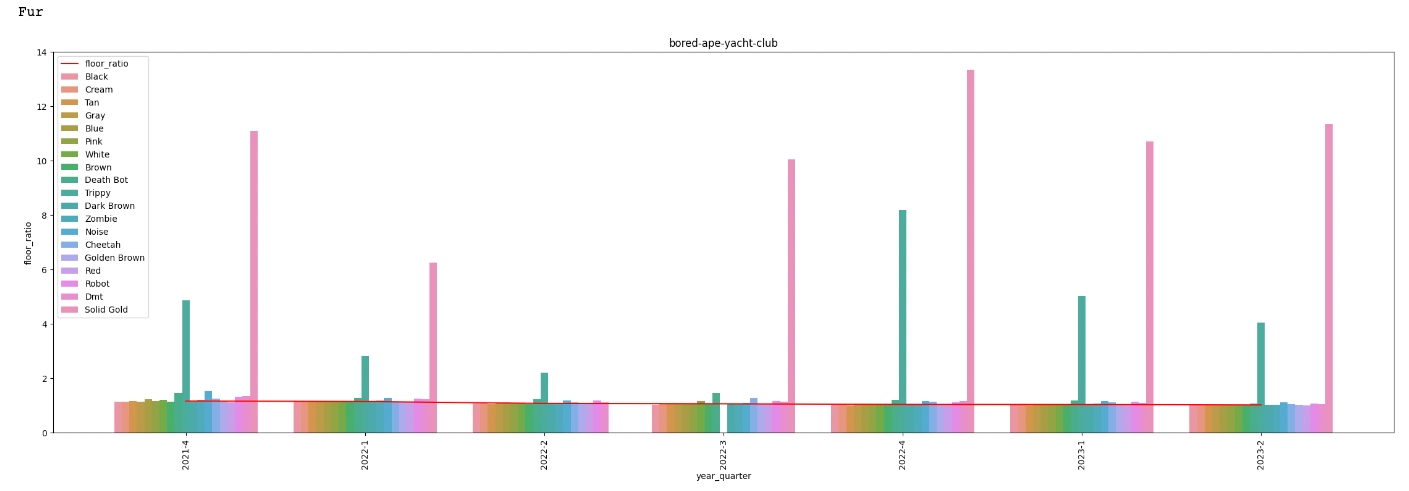Trait Boosts
Numerous NFTs exhibit distinct traits that hold significance within their respective collections. These traits can serve to distinguish NFTs within a particular collection or fulfill specific roles in the collection's ecosystem.
As a result, NFTs within the same collection may vary in terms of rarity and value, contingent upon their unique traits. Consequently, we incorporate this information when assessing the value of NFTs as collateral.
Methodology
Our approach primarily aims to closely approximate the value of any given NFT to its 'real' or 'fair' value, recognising that achieving precise estimation is inherently challenging.
Hence, our methodology revolves around analysing the multipliers that specific traits exhibit when compared to 'floor' NFTs within the collection. 'Floor' NFTs are those that lack rarer or more valuable traits.
To accomplish this, we segment the available sales data of a given collection into equal time periods and observe the impact of different trait values on the sales value.
The example above illustrates the outcome for the 'Fur' trait within the BAYC collection. On the y-axis, you can observe the 'floor ratio,' which is calculated by dividing the sales value of NFTs featuring that particular trait by the floor price of the collection at the corresponding moment.
In this instance, we have established that each time period spans three months, and we aggregate sales data based on the 10th percentile of sales for the trait in question. We consider this approach to be both conservative and reflective of real-world conditions.
After applying the aforementioned methodology to several selected NFT collections, determining the final trait boost requires additional considerations. These considerations encompass:
i) The fluctuation of multipliers associated with specific traits over time. ii) The statistical significance of the trait boost, taking into account factors such as the number of sales and the time elapsed since the last sale within the sample. iii) The desirability of the NFT collection and the specific trait in the secondary market. iv) Cross-referencing with third-party valuation multiples for validation, among other relevant factors.
Utilising this information, a discount (or, where applicable, a cap) is applied to the model's trait boost, resulting in the final assessed value.
For additional details about the Trait Boosts applicable to the chosen collections, please refer to the Loan Conditions section in the app.
Application
Whenever we appraise an NFT, we look at the floor price of the collection at that time, at the traits that the particular NFT has and at the boosts that we have set up for its collection.
The resulting appraisal is either:
Appraisal = Floor Price(in case the NFT does not have any boosted trait)Appraisal = Floor Price * Trait Boost(otherwise)
Last updated
